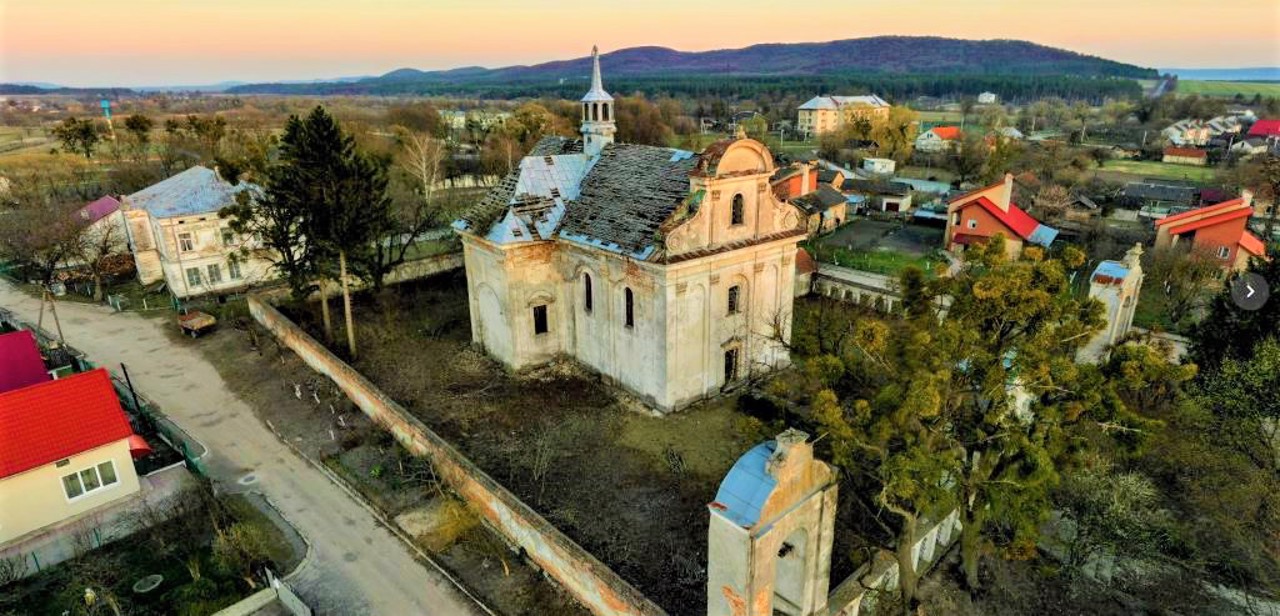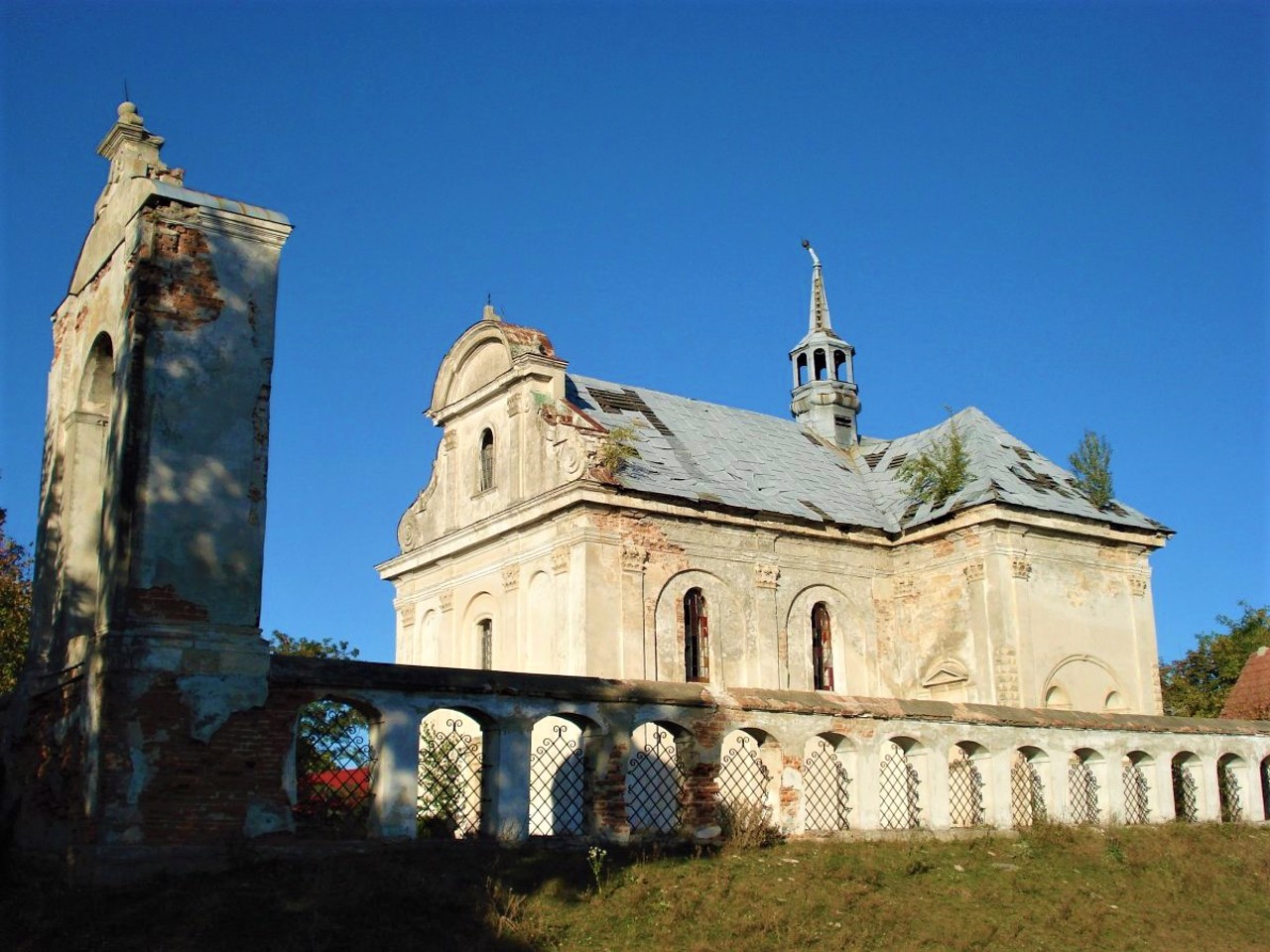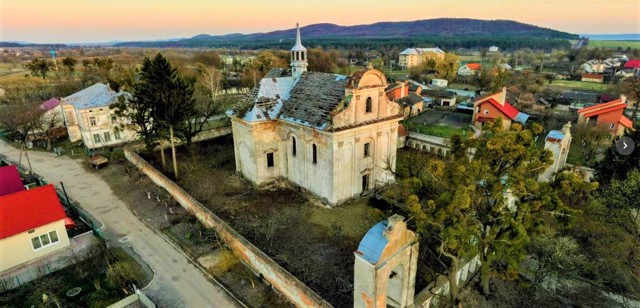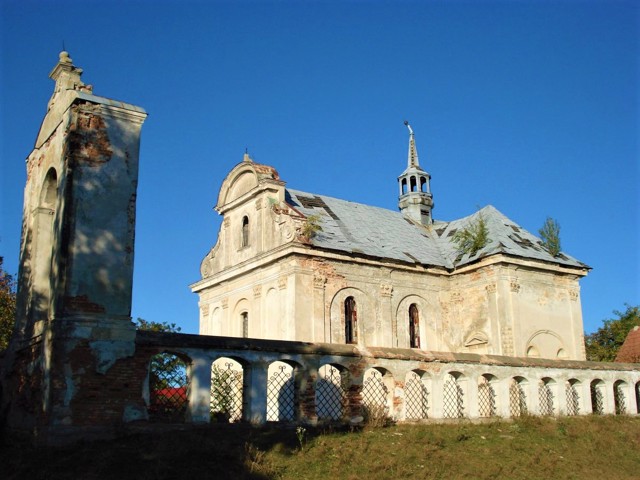Functional temporarily unavailable
General information about Bilyi Kamin
The ancient village of Bilyi Kamin is located on the picturesque shores of the Zakhidny Buh 15 kilometers northwest of Zolochiv.
It was first mentioned in 1493 as a settlement of potters. According to legend, Countess Tereza, who lived here, evicted the potters from here, whose smoke from their ovens disturbed her, and the settlers founded a new village of Havarechchyna, which is still famous for its black pottery masters. Probably, the first fortifications existed in Bilyi Kamin already then.
At the beginning of the 17th century, the village became the property of Prince Yuriy Vyshnevetsky, who built a castle with four corner towe ...
The ancient village of Bilyi Kamin is located on the picturesque shores of the Zakhidny Buh 15 kilometers northwest of Zolochiv.
It was first mentioned in 1493 as a settlement of potters. According to legend, Countess Tereza, who lived here, evicted the potters from here, whose smoke from their ovens disturbed her, and the settlers founded a new village of Havarechchyna, which is still famous for its black pottery masters. Probably, the first fortifications existed in Bilyi Kamin already then.
At the beginning of the 17th century, the village became the property of Prince Yuriy Vyshnevetsky, who built a castle with four corner towers. The next owner was Yeremiya (Yarema) Vyshnevetsky (according to one version, his son Mykhaylo Korybut Vyshnevetsky, the future king of Poland, was born here).
During the Liberation War, the Bilyi Kamin was captured twice by the Cossack troops, and during the Polish-Turkish wars, it was also destroyed twice by the Turks. After receiving Magdeburg law in 1682, the town began to develop intensively, changed several owners (Zhevusky, Radzyvill, Malysh, Shnayder), but by the end of the 19th century it fell into decline.
Currently, only traces of the foundation remain from the castle, but the beautiful Church of the Assumption (built in 1613, architect Amvrosiy Prykhylny), founded by Yuriy Vyshnevetsky, has been preserved.
Старовинне село Білий Камінь розкинулося на мальовничих берегах Західного Бугу в 15 кілометрах на північний захід від Золочева.
Вперше згадується в 1493 році як поселення гончарів. За легендою, графиня Тереза, яка жила тут, виселила звідси гончарів, дим від печей яких їй заважав, і переселенці заснували нове село Гавареччина, яке до сих пір славиться майстрами чорної кераміки. Ймовірно, вже тоді в Білому Камені існували перші укріплення.
На початку XVII століття село перейшло у власність князя Юрія Вишневецького, який побудував замок з чотирма кутовими вежами. Наступним власником був Єремія (Ярема) Вишневецький (за однією з версій, ...
Старовинне село Білий Камінь розкинулося на мальовничих берегах Західного Бугу в 15 кілометрах на північний захід від Золочева.
Вперше згадується в 1493 році як поселення гончарів. За легендою, графиня Тереза, яка жила тут, виселила звідси гончарів, дим від печей яких їй заважав, і переселенці заснували нове село Гавареччина, яке до сих пір славиться майстрами чорної кераміки. Ймовірно, вже тоді в Білому Камені існували перші укріплення.
На початку XVII століття село перейшло у власність князя Юрія Вишневецького, який побудував замок з чотирма кутовими вежами. Наступним власником був Єремія (Ярема) Вишневецький (за однією з версій, тут народився його син Михайло Корибут Вишневецький, майбутній король Польщі).
Під час Визвольної війни Білий Камінь двічі захоплювали козацькі війська, а під час польсько-турецьких воєн також двічі руйнували турки. Отримавши в 1682 році Магдебурзьке право, містечко стало інтенсивно розвиватися, змінив кількох господарів (Жевуські, Радзивілли, Малиші, Шнайдери), але до кінця XIX століття занепало.
В даний час від замку залишилися лише сліди фундаменту, зате зберігся прекрасний Успенський костел (1613 року побудови, архітектор Амвросій Прихильний), заснований Юрієм Вишневецьким.
Сплануй своє перебування у Bilyi Kamin
What to see and where to go in Bilyi Kamin
Tourist attractions and museums of Bilyi Kamin
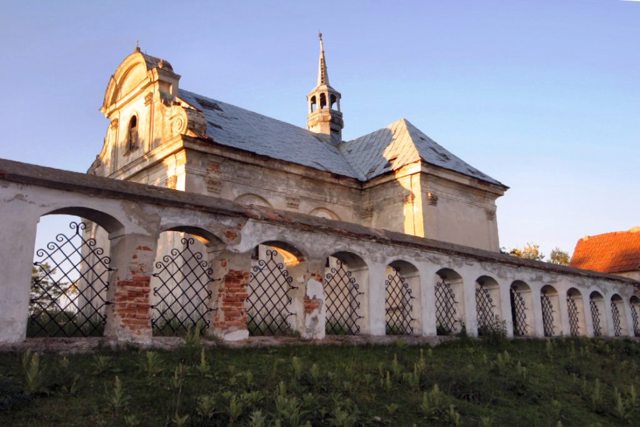
Assumption of Blessed Virgin Mary Church
Temple , Architecture
The Church of the Assumption of the Blessed Virgin Mary in Bilyi Kamin is one of the best works of the Lviv architect Amvrosiy Prykhylny.
The founders of the temple were Prince Yuriy Korybut Vyshnevetskyi and his wife Teresa.
The Church of the Assumption is surrounded by a stone wall with an exit gate and two bell towers. The wall paintings in the interior were made at the end of the 18th century.
In 1983-1991, the temple was used by the Lviv Art Gallery.
The Church of the Assumption of the Blessed Virgin Mary harmoniously combines elements of Baroque and Renaissance architecture.
Bilyi Kamin on photo and video
Reviews Bilyi Kamin
Geographical information about Bilyi Kamin
| {{itemKey}} | {{itemValue}} |
|---|---|
| Region |
Lviv |
